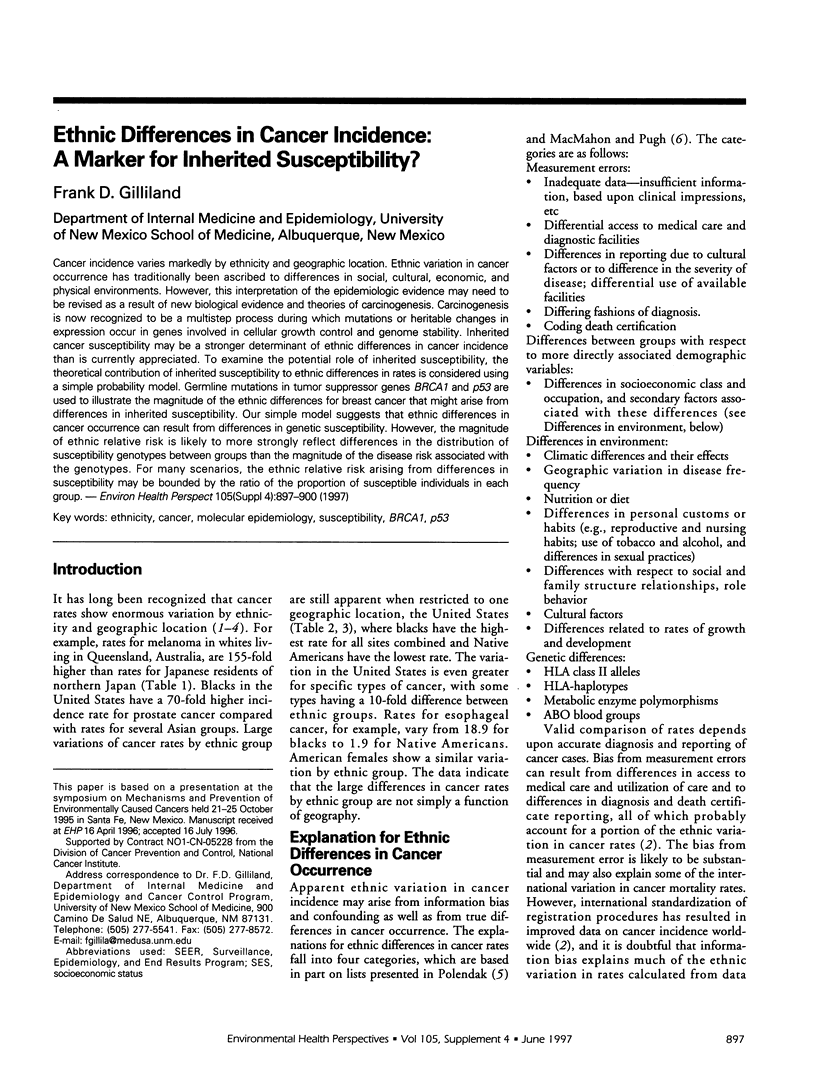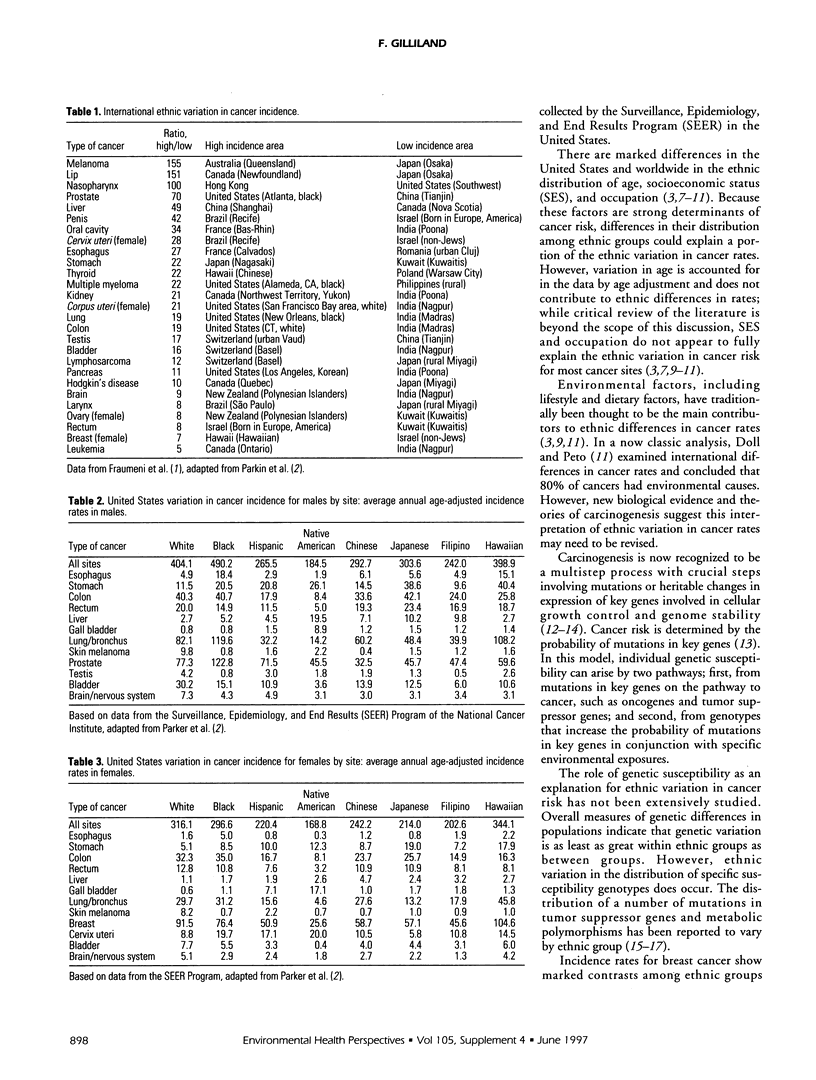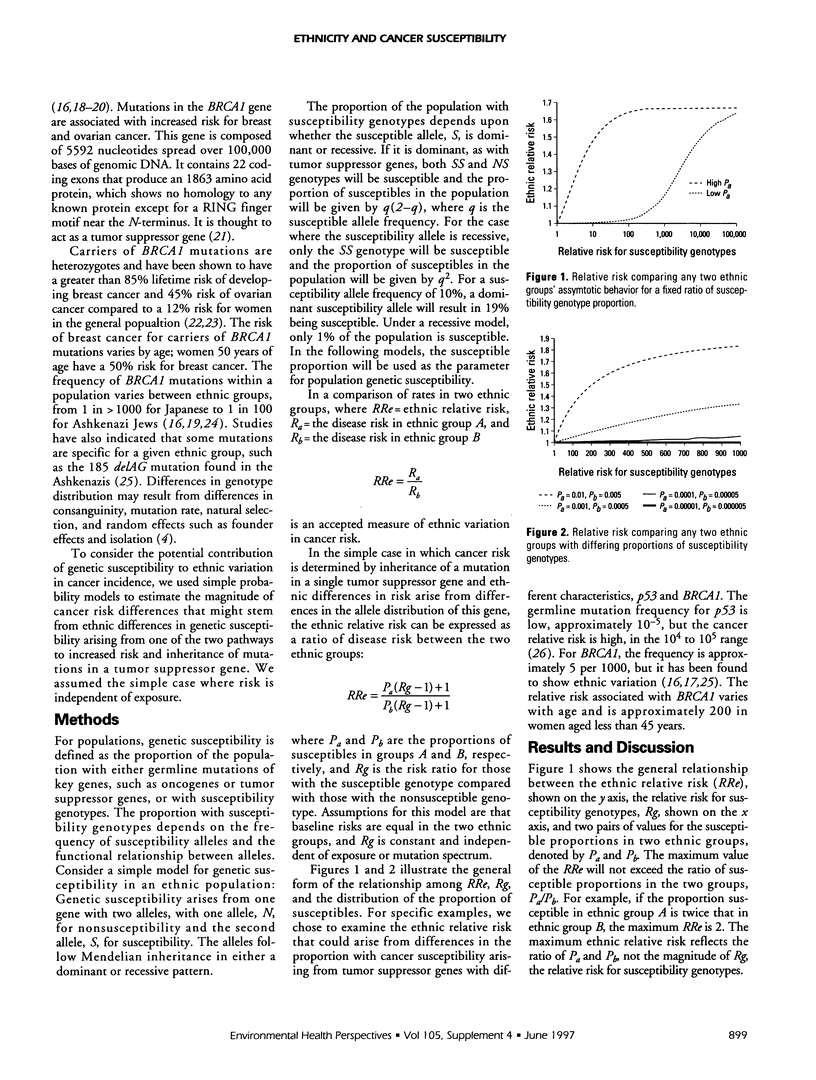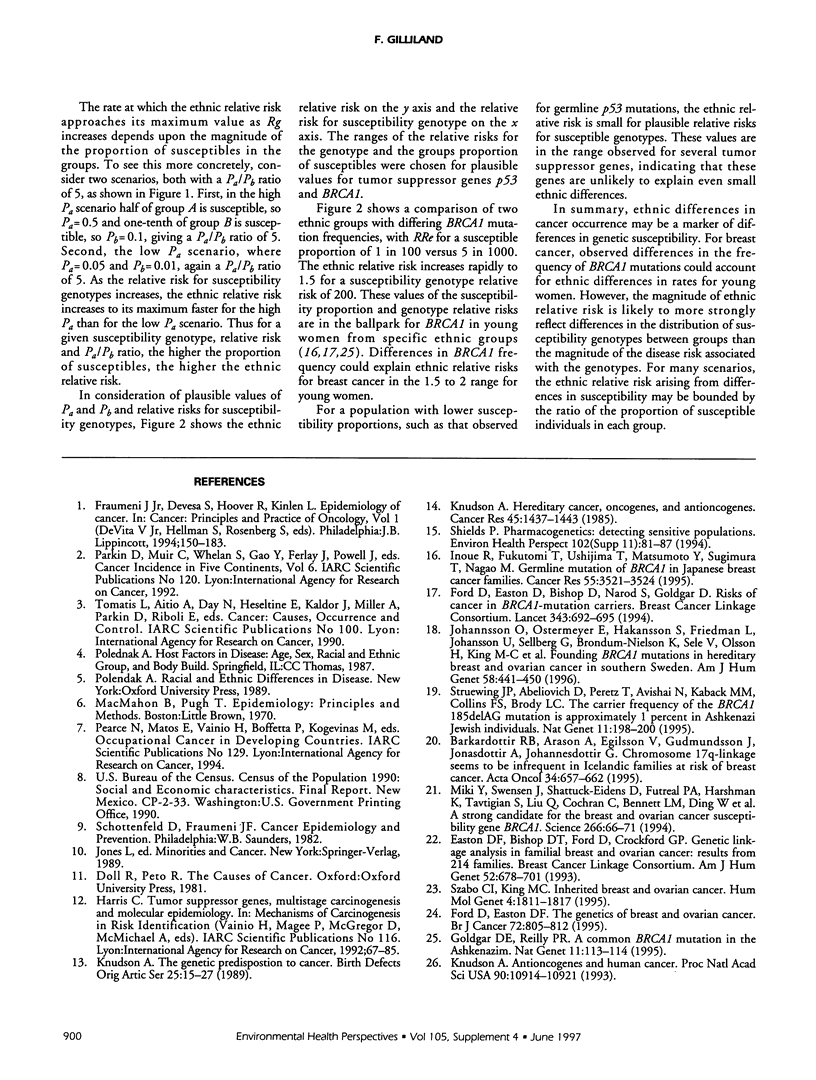Abstract
Cancer incidence varies markedly by ethnicity and geographic location. Ethnic variation in cancer occurrence has traditionally been ascribed to differences in social, cultural, economic, and physical environments. However, this interpretation of the epidemiologic evidence may need to be revised as a result of new biological evidence and theories of carcinogenesis. Carcinogenesis is now recognized to be a multistep process during which mutations or heritable changes in expression occur in genes involved in cellular growth control and genome stability. Inherited cancer susceptibility may be a stronger determinant of ethnic differences in cancer incidence than is currently appreciated. To examine the potential role of inherited susceptibility, the theoretical contribution of inherited susceptibility to ethnic differences in rates in considered using a simple probability model. Germline mutations in tumor suppressor genes BRCA1 and p53 are used to illustrate the magnitude of the ethnic differences for breast cancer that might arise from differences in inherited susceptibility. Our simple model suggests that ethnic differences in cancer occurrence can result from differences in genetic susceptibility. However, the magnitude of ethnic relative risk is likely to more strongly reflect differences in the distribution of susceptibility genotypes between groups than the magnitude of the disease risk associated with the genotypes. For many scenarios, the ethnic relative risk arising from differences in susceptibility may be bounded by the ratio of the proportion of susceptible individuals in each group.
Full text
PDF



Selected References
These references are in PubMed. This may not be the complete list of references from this article.
- Barkardóttir R. B., Arason A., Egilsson V., Gudmundsson J., Jónasdóttir A., Jóhannesdóttir G. Chromosome 17q-linkage seems to be infrequent in Icelandic families at risk of breast cancer. Acta Oncol. 1995;34(5):657–662. doi: 10.3109/02841869509094044. [DOI] [PubMed] [Google Scholar]
- Easton D. F., Bishop D. T., Ford D., Crockford G. P. Genetic linkage analysis in familial breast and ovarian cancer: results from 214 families. The Breast Cancer Linkage Consortium. Am J Hum Genet. 1993 Apr;52(4):678–701. [PMC free article] [PubMed] [Google Scholar]
- Ford D., Easton D. F., Bishop D. T., Narod S. A., Goldgar D. E. Risks of cancer in BRCA1-mutation carriers. Breast Cancer Linkage Consortium. Lancet. 1994 Mar 19;343(8899):692–695. doi: 10.1016/s0140-6736(94)91578-4. [DOI] [PubMed] [Google Scholar]
- Ford D., Easton D. F. The genetics of breast and ovarian cancer. Br J Cancer. 1995 Oct;72(4):805–812. doi: 10.1038/bjc.1995.417. [DOI] [PMC free article] [PubMed] [Google Scholar]
- Goldgar D. E., Reilly P. R. A common BRCA1 mutation in the Ashkenazim. Nat Genet. 1995 Oct;11(2):113–114. doi: 10.1038/ng1095-113. [DOI] [PubMed] [Google Scholar]
- Inoue R., Fukutomi T., Ushijima T., Matsumoto Y., Sugimura T., Nagao M. Germline mutation of BRCA1 in Japanese breast cancer families. Cancer Res. 1995 Aug 15;55(16):3521–3524. [PubMed] [Google Scholar]
- Johannsson O., Ostermeyer E. A., Håkansson S., Friedman L. S., Johansson U., Sellberg G., Brøndum-Nielsen K., Sele V., Olsson H., King M. C. Founding BRCA1 mutations in hereditary breast and ovarian cancer in southern Sweden. Am J Hum Genet. 1996 Mar;58(3):441–450. [PMC free article] [PubMed] [Google Scholar]
- Knudson A. G. Antioncogenes and human cancer. Proc Natl Acad Sci U S A. 1993 Dec 1;90(23):10914–10921. doi: 10.1073/pnas.90.23.10914. [DOI] [PMC free article] [PubMed] [Google Scholar]
- Knudson A. G., Jr Hereditary cancer, oncogenes, and antioncogenes. Cancer Res. 1985 Apr;45(4):1437–1443. [PubMed] [Google Scholar]
- Knudson A. G., Jr The genetic predisposition to cancer. Birth Defects Orig Artic Ser. 1989;25(2):15–27. [PubMed] [Google Scholar]
- Miki Y., Swensen J., Shattuck-Eidens D., Futreal P. A., Harshman K., Tavtigian S., Liu Q., Cochran C., Bennett L. M., Ding W. A strong candidate for the breast and ovarian cancer susceptibility gene BRCA1. Science. 1994 Oct 7;266(5182):66–71. doi: 10.1126/science.7545954. [DOI] [PubMed] [Google Scholar]
- Shields P. G. Pharmacogenetics: detecting sensitive populations. Environ Health Perspect. 1994 Dec;102 (Suppl 11):81–87. doi: 10.1289/ehp.94102s1181. [DOI] [PMC free article] [PubMed] [Google Scholar]
- Struewing J. P., Abeliovich D., Peretz T., Avishai N., Kaback M. M., Collins F. S., Brody L. C. The carrier frequency of the BRCA1 185delAG mutation is approximately 1 percent in Ashkenazi Jewish individuals. Nat Genet. 1995 Oct;11(2):198–200. doi: 10.1038/ng1095-198. [DOI] [PubMed] [Google Scholar]
- Szabo C. I., King M. C. Inherited breast and ovarian cancer. Hum Mol Genet. 1995;4(Spec No):1811–1817. doi: 10.1093/hmg/4.suppl_1.1811. [DOI] [PubMed] [Google Scholar]


